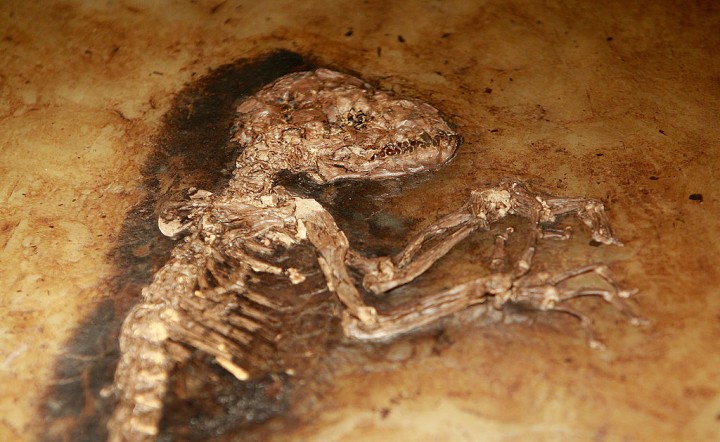

This dinosaur discovery seems to explain the ancestry of modern birds (Photo : Mario Tama/Getty Images)
Scientists have uncovered a strange discovery about a species of dinosaurs that is related to both the T. rex and modern birds. Apparently, this creature had a full set of teeth but was replaced with a beak as it grew up.
The Verge reported that this is the first time that evidence of this phenomenon has been discovered. Typically, reptiles replace lost teeth with new ones. Animals such as the platypus as well as some types of fish are the only ones who go through this type of tooth loss.
The findings were published in the "Current Biology" journal. It was noted that this could help scientists understand the evolution of bird beaks.
The dinosaur is named Limusaurus Inextricabilis, which can be translated to inextricable mud lizard. It has the same size as a dog and once roamed northwestern part of China about 156 and 161 million years ago.
Several of these mud lizards died in muddy pits. Some scientists believe that these pits were formed by larger dinosaurs. It is believed that some of these dinosaurs were unable to remove themselves from the sticky pit and died there. Xing Xu, a paleontologist at the Chinese Academy of Sciences, and his colleagues were able to find several mud lizard bones of different ages.
According to the Christian Science Monitor, 19 dinosaur skeletons were unearthed in the Gobi desert in China. Josef Stiegler, a paleontology PhD candidate at George Washington University, told the publication that the discovery was "puzzling" because it showed that the younger dinosaurs had teeth while adults had a beak instead.
Moreover, the mature specimens also had rocks in their gullet called gastroliths. These are used by modern birds for mechanical digestion.Because of this, scientists concluded that inextricable mud lizards may have been losing teeth when they reach adulthood. Furthermore, it would suggest that their diets would also change.
James Clark, a co-author on the study, hypothesized that the baby mud lizards were eating small insects. The adults, on the other hand, would have had a herbivore diet, with the gastroliths helping with grain digestion. (University Herald)

86-10-68597521 (day)
86-10-68597289 (night)

86-10-68511095 (day)
86-10-68512458 (night)

cas_en@cas.cn

52 Sanlihe Rd., Xicheng District,
Beijing, China (100864)

